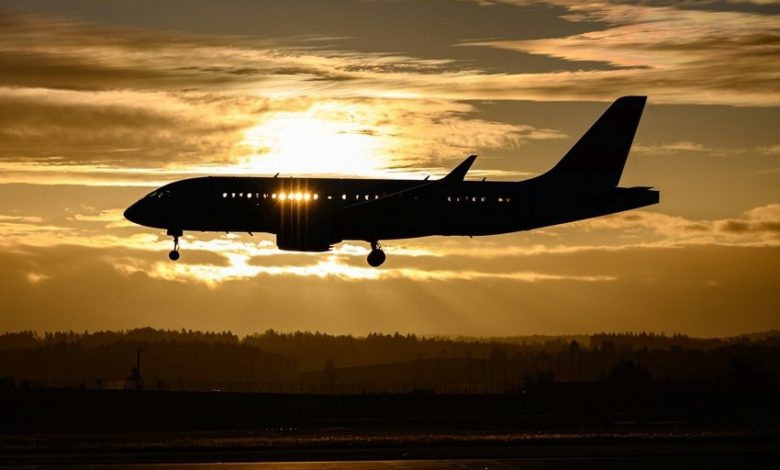Boeing Breathes Easy On Pilot Error Claim—But Is The AI171 Crash The Tip of A Deeper Crisis?

On June 12, 2025, Air India Flight 171, a Boeing 787 Dreamliner en route to London Gatwick, crashed seconds after takeoff from Ahmedabad, killing 260 people, including passengers, crew, and those on the ground. A month later, the preliminary findings of India’s Aircraft Accident Investigation Bureau (AAIB) appear to shift the spotlight away from Boeing (NYSE:BA) and toward the actions inside the cockpit. According to black box data, both fuel-control switches—located between the pilots—were moved from “RUN” to “CUTOFF” just after reaching 180 knots. One pilot’s startled query, “Why did you cutoff?” and the other’s denial, suggests confusion rather than intent. These revelations may shield Boeing from immediate regulatory blowback, but they also spark a swirl of unanswered questions. While no mechanical faults were officially cited, the presence of a controversial fuel switch design and the shadow of the 737 MAX scandal have reignited scrutiny over Boeing’s safety culture and disclosure practices.
Unresolved Mechanical & Design Uncertainty Surrounding Fuel Switch Locking Mechanism
While the preliminary report shifts focus to potential pilot error, it explicitly avoids drawing conclusions about why the fuel-control switches were moved to the “cutoff” position in the first place. These switches are not supposed to be easy to activate accidentally—they are spring-loaded, protected by a metal guard, and require deliberate lifting and flicking. Yet both switches moved within a second of each other during takeoff, something aviation experts find extremely rare without intentional or mechanical interference. The report references a 2018 FAA Special Airworthiness Information Bulletin (SAIB) that warned of possible disengagement of locking mechanisms on 737 models—mechanisms that are similar in design to those on certain 787s. While this advisory was non-mandatory, it is now under intense scrutiny since Air India never inspected its 787 fuel switches, citing the lack of a requirement. The failure to mandate these inspections—and Boeing’s decision not to elevate the advisory to a safety directive—suggests a gap in proactive risk mitigation. Furthermore, the aircraft had previously logged a fault code on a stabilizer sensor during its earlier flight from Delhi, prompting concerns over broader hardware reliability. The aircraft’s throttle-control module had been replaced twice in recent years, though unrelated to the fuel switches, adding to the narrative of recurring component issues. While FAA and Boeing both maintain that no unsafe condition has yet been identified, the sequence of events raises concerns about whether a mechanical anomaly—rather than a human mistake—triggered the fatal crash. In this context, any premature exoneration of Boeing could eventually unravel under deeper scrutiny.
Lingering Parallels With The 737 MAX Scandal Undermine Trust
The fuel-switch debate and the handling of the preliminary report have drawn uncomfortable parallels to Boeing’s 737 MAX crisis, in which internal knowledge of the MCAS system’s flaws was not disclosed until two fatal crashes occurred. In the AI171 case, the switches in question were known to have design vulnerabilities dating back to at least 2018, yet the issue was quietly documented without triggering compulsory inspections. Boeing’s choice to treat this information as advisory rather than enforceable reflects a pattern critics see as risk minimization over transparency. The situation is further inflamed by the absence of any mandatory action post-crash and the AAIB’s subdued release of the report—without a press conference, stakeholder consultation, or real-time updates to aviation regulators and unions. The secrecy and limited public engagement resemble the early days of the MAX crisis, when concerns about automation and safety systems were similarly downplayed. Additionally, the current narrative places disproportionate weight on cockpit confusion despite the pilots passing medicals, having strong flight records, and reacting with textbook emergency protocol, including a timely Mayday call. While it's possible pilot error played a role, the speed and symmetry of the switch movements suggest either a systems fault or a deeper issue within the aircraft’s FADEC or electronic control modules. If these links to MAX-style oversight weaknesses are eventually proven, Boeing risks not only regulatory backlash but also a reputational erosion that compounds investor and customer skepticism.
Investigation Lacks Transparency & Raises Eyebrows Over Potential Cover-Up
The preliminary findings have not only failed to answer key questions but have inadvertently ignited suspicions of a possible cover-up. Key stakeholders—including India’s pilot associations—have criticized the process for its opacity, citing the absence of consultation and the leaked nature of the report’s release. These concerns echo similar frustrations voiced during the 737 MAX investigations, where it was later revealed that Boeing and regulators had withheld crucial safety data. In the AI171 case, the decision to quickly highlight pilot action while offering little technical explanation regarding the switch’s behavior invites skepticism. No evidence has been presented to rule out an electrical malfunction, short-circuiting, or software anomaly within the FADEC (Full Authority Digital Engine Control) system that governs engine relighting protocols. Furthermore, the timing of the switch reversals and the relight sequence, as captured by the Enhanced Airborne Flight Recorder, shows that the engines began spooling back up—but the aircraft simply lacked the altitude and time to recover. The mechanical logs also show that a fault code had been observed on a different system (the stabilizer sensor) prior to the crash, suggesting the possibility of cascading issues. Investigators’ unwillingness to issue even precautionary checks on all Dreamliners using similar fuel-switch systems is being interpreted by some as an effort to contain liability. If these suspicions persist, especially without broader regulatory intervention, Boeing’s credibility in future airworthiness investigations could face sustained damage.
Global Fleet Implications & Regulatory Fallout Still Loom Large
While no global safety directive has been issued yet, multiple international carriers—including Etihad and Lufthansa—have begun inspecting the fuel-switch locking mechanisms on their own 787 fleets. Air India has reportedly inspected about half of its Dreamliners, though no faults have been disclosed so far. The FAA issued a fresh reminder about its 2018 advisory, but again chose not to declare the situation an “unsafe condition,” a stance that could shift abruptly should further findings implicate systemic failure. The reluctance to initiate a broader investigation into fuel-control systems—despite a deadly crash—suggests that Boeing may be temporarily shielded by ambiguity, but not indefinitely. Global regulators, under growing public pressure, could revisit the certification process for fuel-switch mechanisms, especially given their shared design lineage with older aircraft like the 737. Airlines operating mixed Boeing fleets may also adopt a more cautious stance, grounding aircraft or delaying deliveries pending clarity. This latent risk could ripple into Boeing’s order book and cash flows, particularly if large clients demand retrofits or certification updates. Furthermore, should litigation emerge from families of victims or class-action lawsuits tied to maintenance advisories, Boeing could be drawn into another prolonged legal quagmire. The Dreamliner was once Boeing’s crown jewel for long-haul travel, but this incident may force a reassessment of its reliability profile across both customer and regulator communities.
Final Thoughts
Source: Yahoo Finance
As the preliminary report into the crash of AI171 appears to temporarily shift blame away from Boeing by pointing toward cockpit actions, the market has seen this as a big positive which is why we see a runup in Boeing’s stock price. However, the bigger picture remains far from settled. The quick movement of both fuel-control switches, the history of non-mandatory advisories, parallels to the 737 MAX crisis, and the absence of transparency have all combined to keep a cloud over Boeing’s aircraft safety assurances. Even if pilot error is ultimately confirmed, the lack of proactive safety checks and ambiguous hardware performance point to vulnerabilities in the system that require resolution. For Boeing, this incident may not immediately shake investor confidence, but it underscores the fragility of its recovery path and the ongoing risk of systemic oversight failures. If deeper mechanical issues surface—or if regulators revise their assessment—the narrative could turn swiftly. In the absence of full transparency and reform, the AI171 crash remains a warning signal that Boeing’s turbulence may not yet be behind it.



